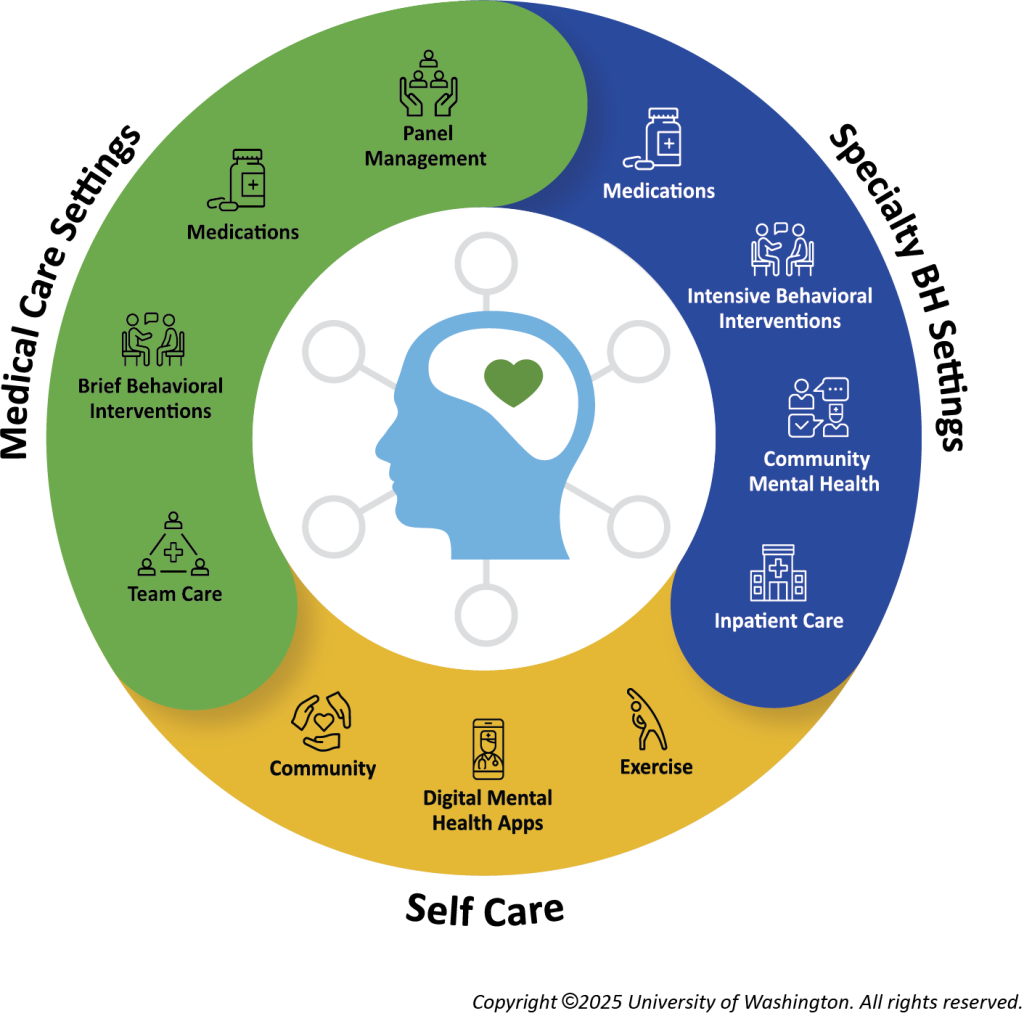
Integrating Behavioral Health into Primary Care: An Ecosystem Approach
To effectively integrate behavioral health into primary care, it’s essential to recognize the full spectrum of behavioral health care approaches that patients may need. From self-care strategies to specialty behavioral health services, understanding this continuum is key to supporting whole-person care.

Self-Care
A significant number of individuals with mental health concerns begin with self-care. These strategies include:
- Participation in community organizations
- Use of digital self-care apps
- Lifestyle changes such as improved diet, regular exercise, and better sleep hygiene
While these actions are often self-directed, they form a critical foundation for any formal behavioral health treatment and should be acknowledged and supported within care planning.

Medical Care Settings
Drawing on over 25 years of research into behavioral health integration in medical settings, several key evidence-based strategies have emerged:
- Team-Based Care: Including models like Collaborative Care (CoCM), which emphasize shared responsibility among a care team
- Brief Behavioral Interventions: Targeted, short-term support for common mental health concerns
- Medication Management: Supporting patients in initiating and adhering to psychiatric medications
- Panel Management: Proactive population-level strategies to identify and engage patients in need
Collaborative Care models typically incorporate all of these strategies to deliver organized, effective care within primary care settings.

Specialty Behavioral Health Settings
Not all behavioral health needs can be met in primary care. Some patients require more intensive or specialized services, such as:
- Complex medication prescribing and monitoring
- Intensive psychotherapy or behavioral interventions
- Services from community mental health centers — including psychiatric rehabilitation for serious and persistent mental illnesses
- Higher levels of care, such as inpatient treatment, partial hospitalization, or intensive outpatient programs
Building Capacity Across the Ecosystem
As organizations expand their behavioral health capacity, it’s important to assess which services can be delivered within their setting and how to support patients across the entire ecosystem. Key considerations include:
- Supporting whole-person care at every level
- Facilitating smooth transitions between levels of care
- Ensuring coordination and communication across providers and settings